Ashley Hazell-Yildirim & Helen Lavender, The Centre for Language in Education (CLE), Hong Kong Institute of Education, Hong Kong
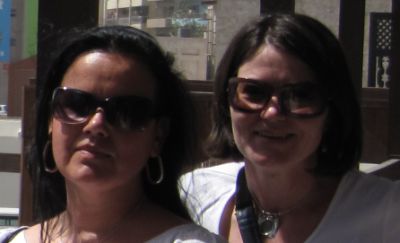 Ashley Hazell-Yildirim and Helen Lavender both work at the Centre for Language in Education, (CLE) Hong Kong Institute of Education in Hong Kong (HKIEd) as language instructors to student-teachers of all disciplines. Helen is also the manager of the Language Learning Centre. Ashley worked at Sabanci University from 2005-7. In this article, we would like to share a working model incorporating ‘interactive assessment’ based on some of the main principles of Assessment for Learning.
Ashley Hazell-Yildirim and Helen Lavender both work at the Centre for Language in Education, (CLE) Hong Kong Institute of Education in Hong Kong (HKIEd) as language instructors to student-teachers of all disciplines. Helen is also the manager of the Language Learning Centre. Ashley worked at Sabanci University from 2005-7. In this article, we would like to share a working model incorporating ‘interactive assessment’ based on some of the main principles of Assessment for Learning.
Introduction
Involving learners in assessment is a conscious, organised decision which represents a paradigm shift in second language assessing practices and in ways that a curriculum is delivered to create optimal learning opportunities for learners. This decision does not always align with an established culture of assessment oflearning (summative assessment) as practised in many international, educational, and EFL/ESL contexts. A more ideal model of assessment for learning in which learners are directly informed of how they will be assessed from the outset, are involved in feedback, feedforward and evaluation at every level can be an effective learning pedagogy in itself. Committing to assessment for learning by implementing established best practices and behaviours in teaching and learning, and by integrating a workable model in the curriculum, is achievable.
Definitions from Literature: AfL and Formative Assessment
Assessment for learning (AfL), formative assessment, learning-oriented assessment, interactive assessment. Not just buzzwords of the moment, but a principled approach to learning through assessment which is in place in schools and tertiary institutions around the world. The Qualifications and Curriculum Authority in the UK defines AfL simply as ‘the process of using classroom assessment to improve learning, whereas assessment of learning is the measurement of what pupils can do.’ (retrieved 3 May 3, 2009). The Assessment Reform Group (ARG) give a more detailed definition as ‘the process of seeking and interpreting evidence for use by learners and their teachers to decide where the learners are in their learning, where they need to go and how best to get there (2002). Two key advocates of AfL, Paul Black and Dylan Wiliam (1998), define AfL as the information gathered through learning activities undertaken by teachers and/or learners which can be used as feedback as a way to inform and modify the teaching and learning that is taking place. AfL as the header encompasses all that happens in formative assessment, learning-orientated assessment and interactive assessment, and the terms are often interchangeable.
Our Working Definitions: AfL and Formative Assessment
It is useful to take definitions of approaches and fine-tune them to align with your own context. Therefore, we have come up with our own definitions to work with.
AfL in our context is the overriding idea that assessment is not solely a tool to measure and judge but to be used as effective pedagogy to ensure learning is taking place, assessment and improvement paths are transparent, and our learners are actively involved in assessment processes and decisions.
Formative Assessment in our context is the conscious planning of assessment and learning within the curriculum, mainly in the speaking and writing evaluation of our learners’ English skills. The learners are involved from the first day of the course, feedback is the concern of everyone, and completion percentage of the course mark is given, rather than an individual grade.
Interactive Assessment
Hamp Lyons & Tavares (2008) define interactive assessment as,
‘a very clear and carefully developed system of assessment for learning which emphasises formative uses of an eventual summative assessment: Teachers engage students with thinking about their learning during the assessment process; assessment is one stage of the teaching, learning and assessing cycle in the classroom; every assessment is therefore for feedforward as well as for feedback’
Their work has concentrated on the intervention of the teacher-assessor through scaffolding while the spoken assessment is taking place so that the learners are supported during the assessment and in their learning. The intervention or interaction ‘stimulates and challenges’ the learners to produce discourse higher than their actual ability (Hamp Lyons & Tavares, 2008). Therefore, interactive assessment, in this sense, is when the teacher can meet the needs of the learner, (especially) during a speaking ‘assessment’ task through interaction with the learner, i.e., scaffolding, guiding questions, additional questions, wait-time, back-channelling and other strategic interaction to use the assessment itself as a tool for learning and to ensure students are producing the language they are capable of (Hamp Lyons & Davidson, n.d.). This is based on Vygotsky’s theory of the ‘zone of proximal development’ (ZPD) where learning takes place in the ‘zone’, which is above the knowledge and skill level of the learner at that current time. Vygotsky’s concepts of the ZPD also include,
-the difference between what a learner can do without help and what they can do with help,
-the learner following an adult’s example, gradually developing the ability to do certain tasks without help or assistance,
-the learner’s development being determined by social interaction and collaborative problem-solving. (1978)
In our context, however, we see interactive assessment as having four distinct layers.
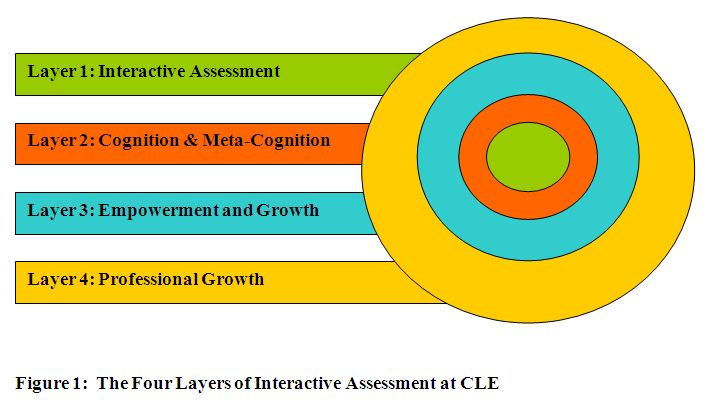
The first level resembles that of Hamp-Lyons and Tavares’ interactive assessment description; response to/from the teacher and learner, and with peers (in our context) at any stage of the assessment.
The second involves the learners at both a cognitive and meta-cognitive level, creating opportunities for the learners to think about, talk about, ask and answer questions about, and reflect on, their role and involvement in the formative assessment process. This happens when the learners are part of feedback at the pre-, during and post-feedback stage, i.e. involving the learners in planning, discussing, reflecting and deciding what is understood by the AfL process. An example of this is through questionnaires and reflection tools. One such tool in our model is the use of a peer evaluation questionnaire to gauge our learners’ views about peer evaluation on writing before it takes place, and then immediately afterwards using the same prompts. Another tool is the use of a preferred feedback type and medium handout before any response is given to 2nd draft writing. Our learners have the opportunity to choose the type of feedback and in the medium they prefer – hardcopy, softcopy, audio-video, or audio. These two tools are examples of what we consider to be part of interactive assessment.
The third layer is about empowerment, growth and choice; giving freedom to the learners about how their assessment for learning is going to happen and with whom.
The fourth layer, professional growth, is related to our context and the fact that our learners are going to be teachers of the future. Providing them with the opportunity to engage in formative assessment experientially as learners can help them develop their own principles about AfL for when they are teachers.
A Working Model as an Interpretation of Interactive Assessment
Our model below for speaking and writing formative assessments focusing on our interpretation of interactive assessment is based on Formative Assessment Cycle, Mcmillian (2007:3) and Learning-orientated Assessment, Carless, Joughin, Liu et al, (2006:9).
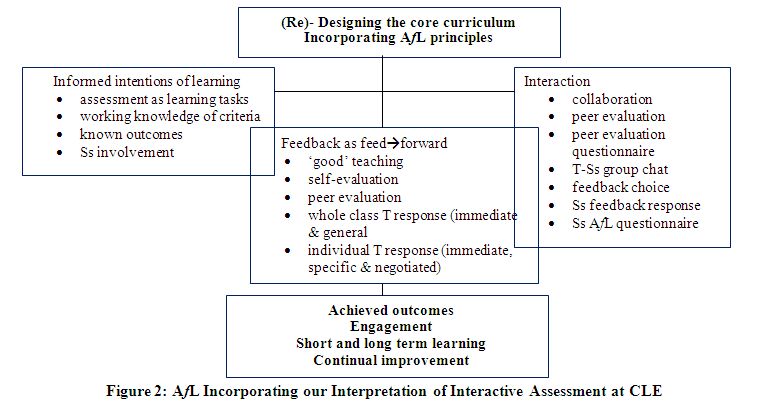
A Timetable of Formative Writing Assessment integrating Interactive Assessment
The timetable outlined here has been developing over the last 2 academic years and works for all 3 levels of our core curriculum modules.
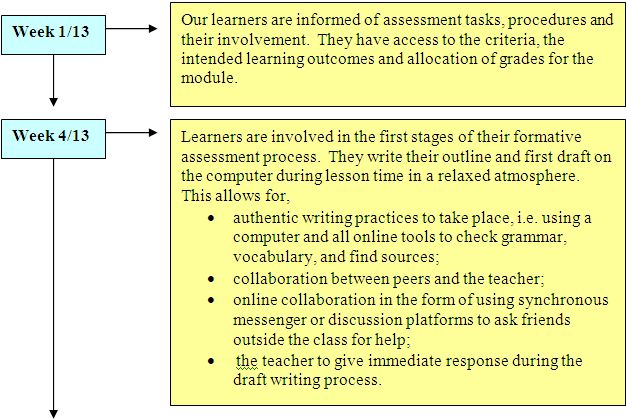
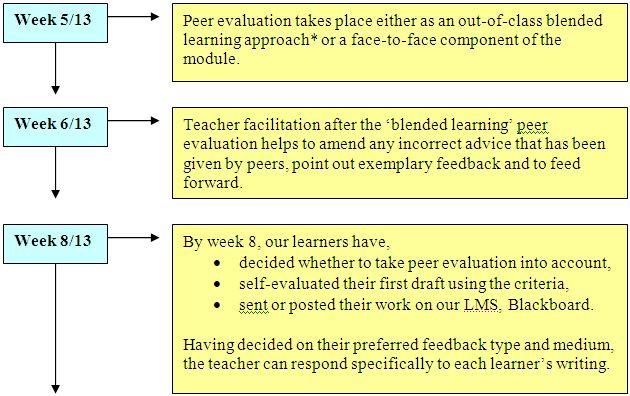
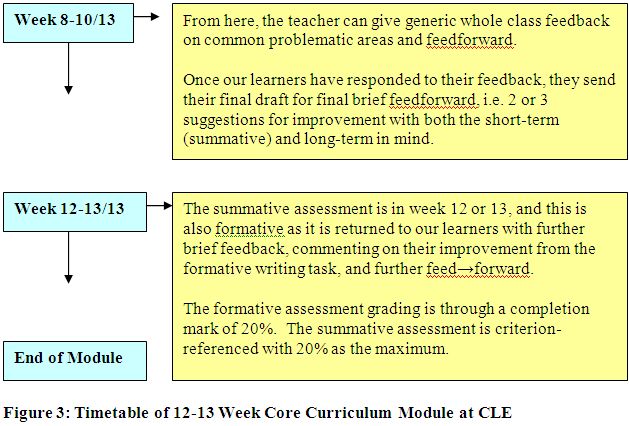
Our Principles
The following principles are an amalgam of different sources (ARG, 2002, Wiliam, 2005) which have been incorporated to describe our model. In our terms, assessment for learning ensures,
-effective planning of assessment for learning in the curriculum;
-key AfL elements are central to best 2nd LL teaching and learning practices;
-learners are informed of all AfL intentions and become owners of the process;
-learners are involved in the choice of their own learning;
-individual learning styles are taken into account;
-all learners are resources and evaluators, for themselves, their peers and their teacher;
-collaboration and learning together;
-feedback to move forwards in short and long term-learning;
-a sense of motivation for learning rather than for getting grades;
-a directed path for continual improvement, growth and independent learning.
Final Word
The CLE Formative Assessment Working Group is currently evaluating the working model we have described here through questionnaires to our students, focus group meetings with our students and teachers, and achieved learning outcomes through text analysis. We will make amendments and revisions to the working model after this systematic action research project has been finalised, but at this stage informal feedback and official evaluation across the levels show that interactive assessment in AfL has been received positively.
*We would like to acknowledge colleague Michelle Raquel for her suggestion for the blended learning approach to peer evaluation, and Lloyd Norris for his input into the writing formative assessment into the curriculum.
** This is part of the paper presented at the 10th METU Convention, Ankara on 23rd May 2009.
References
Black, P. & Wiliam, D. (1998). Assessment and classroom learning. Assessment in Education: Principles, Policies & Practice, 5:1, 7-74.
Carless, D., Joughin, G., Liu, N.F., et al. (2006). How assessment supports learning: Learning-orientated assessment in action. Hong Kong: Hong Kong University Press.
Davidson, C. & Hamp-Lyons, L. Interactive assessment: what, how and why. School-based Assessment Trainer Notes, Hong Kong.
Hamp Lyons, L. & Tavares, N. (2008). Retrieved 6 May 2009 from
http://sba.edu.hku.hk/new_qef/res_interactive.html and http://web.hku.hk/~sbapro/series0709.html
The Qualifications and Curriculum Authority, UK http://www.qca.org.uk/qca_4334.aspx
Ten principles of AfL – Assessment Reform Group, 2002
http://www.qca.org.uk/libraryAssets/media/4031_afl_principles.pdf
Wiliam, D. (2005). Assessment for Learning: Putting it into Practice. SETT – The Scottish Learning Festival, Transforming Professional Practice, Glasgow, UK, September, 2005.
Vygotsky, L. S. (1978). Mind in Society: The Development of Higher Psychological Process. Cambridge, MA: Harvard University Press.
